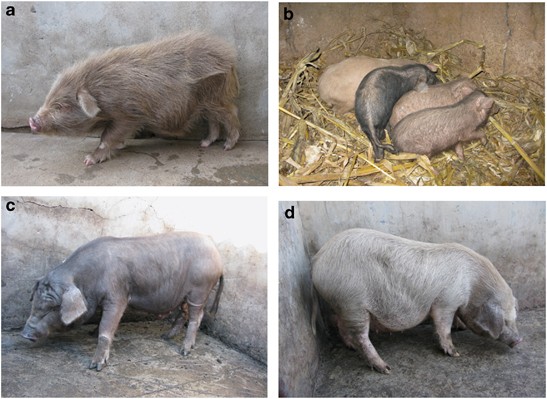- Select a language for the TTS:
- UK English Female
- UK English Male
- US English Female
- US English Male
- Australian Female
- Australian Male
- Language selected: (auto detect) - EN
Play all audios:
COVID-19 global pandemic, caused by severe acute respiratory syndrome coronavirus type 2 (SARS-CoV-2),1 has swept 185 countries and regions with more than 2,824,728 confirmed cases, and
197,667 death as on April 25, 2020 according the Coronavirus Resource Center at Johns Hopkins University. Accumulating data suggest that hypertension, diabetes, and cardiovascular diseases
are the most frequent comorbidities in COVID-19 patients, and case mortality rates tended to be high in these individuals.2 Among few studies that focus on COVID-19 severe pneumonia,
cardiovascular diseases are among the most frequent comorbidities,3,4,5 with hypertension being the most common (58 of 191 patients, 30%) in one study, exceeding twofold in COVID-19 ARDS
patients (23 of 84, 27.4%) more than mild patients (16 of 117, 13.7%) in another study. Angiotensin II (Ang II) is a potent hypertensive hormone, and increased Ang II is associated with
hypertension and heart failure,6 lung7 and renal dysfunction.8 Angiotensin-converting enzyme 2 (ACE2) converts Ang II to Ang 1–7 to negatively regulate the renin–angiotensin system (RAS) and
renin–angiotensin–aldosterone system.9 SARS-CoV-2 binds to the catalytic domain of ACE2, with higher binding affinity than SARS-CoV, for cell entry.10,11,12 Notably, SARS-CoV Spike protein
engagement can downregulate ACE2 expression and activate RAS for lung injury.13 Furthermore, plasma level of Ang II is markedly elevated and correlated to viral load and lung injury of
COVID-19 patients.14 Therefore, reduction of cell surface ACE2, due to SARS-CoV-2 endocytosis, would augment Ang II pathological processes in the development of hypertension, cardiomyopathy,
and nephropathy15 in severe COVID-19 patients. Hypertension is treated with ACE inhibitors and angiotensin II type-I receptor blockers (ARBs), resulting in ACE2 upregulation. It is unclear
whether ARB/ACE regime is warranted in COVID-19, due to insufficient evidence at the moment. European Society of Cardiology recommends not to change RAS blockade in COVID-19 patients who are
on it, unless adverse clinical indications occur. Further study needs to better understand the impaired RAS in the viral pathogenesis of COVID-19. ACE2 is highly expressed in the heart
tissue, implicating a possibly direct viral infection of the myocardium. Strikingly, two independent postmortem examinations revealed no evidence of viral infection or replication in cardiac
tissues, albeit pronounced cardiac inflammation exists.16,17 It is unlikely that viral infection and replication directly cause or aggravate cardiac injury in these severe patients. It is
becoming recognized that macrophages and T cells infiltrate to the heart in response to hypertension, and the end-organ damage are in part mediated by activation of these infiltrated
cells.18 Our lab showed that mice lacking CD8+ T cells are efficiently protected from hypertension-induced cardiac damage. CD8+ T cells thus can sense the hypertension independent of T cell
receptor.19 More importantly, CD8+ T cells are required for macrophage infiltration in myocardium and subsequent activation by CD8+ T cells secreted IFN-γ. How do CD8+ T cells respond to
hypertension? One study suggests that mineralocorticoid receptor on CD8+ T cells directly sense blood pressure and promote inflammatory milieu through secreting IFN-γ.20,21 Furthermore,
hypertension can trigger oxidative modification of proteins in DC cells by highly reactive γ-ketoaldehydes (isoketals), which activate DC to produce IL-6, IL-1β, and IL-23. Activated DCs
promote T cell, particularly CD8+ T cell, proliferation and production of IFN-γ and IL-17A.22 Intriguingly, a secondary hemophagocytic lymphohistiocytosis, which associates with a massive
CD8+ T cell and macrophage activation but decreased NK cell activity, has been noted for COVID-19 patients in European ICUs. Taken together, these results suggest that CD8+ T cells may
function as a key hypertension effector that drives macrophage-mediated cardiac damage. Severe COVID-19 patients also showed increased IL-6, IL-1β, and IFN-γ.23 It is worthy of studying
whether blockade of IL-6 or IL-1β, which is currently under clinical trials, would reduce cardiac injury through inhibition of CD8+ T cell-macrophage infiltration and overactivation. The
glucocorticoid treatment of ICU patients shall also be closely monitored for potential beneficial or detrimental effect on CD8+ T cell activation. Lastly, CCR5 is a major chemoattracting
receptor in CD8+ T cells that involves in various pathogenic conditions, including viral infections.24 The antiviral drugs, such as Selzentry (maraviroc) and Leronlimab (PRO 140), have been
successfully used for treatment of AIDS.25 It is therefore of great interest to study whether these drugs can block cardiac infiltration of CD8+ T cells thereby reduce hypertensive cardiac
injury of COVID-19 patients. REFERENCES * Zhu, N. et al. A novel coronavirus from patients with pneumonia in China, 2019. _N. Engl. J. Med_ 382, 727–733 (2020). Article CAS Google Scholar
* Bavishi, C., Maddox, T. M. & Messerli, F. H. Coronavirus disease 2019 (COVID-19) infection and renin angiotensin system blockers. _JAMA Cardiol._
https://doi.org/10.1001/jamacardio.2020.1282 (2020). * Yang, X. et al. Clinical course and outcomes of critically ill patients with SARS-CoV-2 pneumonia in Wuhan, China: a single-centered,
retrospective, observational study. _Lancet Respir Med_. https://doi.org/10.1016/s2213-2600(20)30079-5 (2020). Article CAS Google Scholar * Zhou, F. et al. Clinical course and risk
factors for mortality of adult inpatients with COVID-19 in Wuhan, China: a retrospective cohort study. _The Lancet_. 395, 1054–1062 (2020). Article CAS Google Scholar * Wu, C. et al. Risk
factors associated with acute respiratory distress syndrome and death in patients with coronavirus disease 2019 pneumonia in Wuhan, China. _JAMA Int. Med._
https://doi.org/10.1001/jamainternmed.2020.0994 (2020). * Crackower, M. A. et al. Angiotensin-converting enzyme 2 is an essential regulator of heart function. _Nature_ 417, 822–828 (2002).
Article CAS Google Scholar * Imai, Y. et al. Angiotensin-converting enzyme 2 protects from severe acute lung failure. _Nature_ 436, 112–116 (2005). Article CAS Google Scholar * Torres,
V. E. et al. Angiotensin blockade in late autosomal dominant polycystic kidney disease. _N. Engl. J. Med._ 371, 2267–2276 (2014). Article Google Scholar * Santos, R., Ferreira, A. J.,
Verano-Braga, T. & Bader, M. Angiotensin-converting enzyme 2, angiotensin-(1-7) and Mas: new players of the renin-angiotensin system. _J. Endocrinol._ 216, R1–R17 (2013). Article CAS
Google Scholar * Xu, X. et al. Evolution of the novel coronavirus from the ongoing Wuhan outbreak and modeling of its spike protein for risk of human transmission. _Sci. China Life Sci._
63, 457–460 (2020). Article CAS Google Scholar * Yan, R. et al. Structural basis for the recognition of SARS-CoV-2 by full-length human ACE2. _Science_ 367, 1444–1448 (2020). Article CAS
Google Scholar * Hoffmann, M. et al. SARS-CoV-2 Cell Entry Depends on ACE2 and TMPRSS2 and Is Blocked by a Clinically Proven Protease Inhibitor. _Cell_ 181, 271–280.e278 (2020). Article
CAS Google Scholar * Kuba, K. et al. A crucial role of angiotensin converting enzyme 2 (ACE2) in SARS coronavirus–induced lung injury. _Nat. Med._ 11, 875–879 (2005). Article CAS Google
Scholar * Liu, Y. et al. Clinical and biochemical indexes from 2019-nCoV infected patients linked to viral loads and lung injury. _Sci. China Life Sci._ 63, 364–374 (2020). Article CAS
Google Scholar * Cheng, Y. et al. Kidney disease is associated with in-hospital death of patients with COVID-19. _Kidney International_ 97, 829–838 (2020). Article CAS Google Scholar *
Yao, X. H. et al. [A pathological report of three COVID-19 cases by minimally invasive autopsies]. _Zhonghua bing li xue za zhi Chin J Pathol_ 49, E009,
https://doi.org/10.3760/cma.j.cn112151-20200312-00193 (2020). Article Google Scholar * Xu, Z. et al. Pathological findings of COVID-19 associated with acute respiratory distress syndrome.
_Lancet Respir. Med_. _8_, 420–422 (2020). Article CAS Google Scholar * Frieler, R. A. & Mortensen, R. M. Immune cell and other noncardiomyocyte regulation of cardiac hypertrophy and
remodeling. _Circulation_ 131, 1019–1030 (2015). Article Google Scholar * Ma, F. et al. The requirement of CD8+ T cells to initiate and augment acute cardiac inflammatory response to high
blood pressure. _J. Immunol._ 192, 3365–3373 (2014). Article CAS Google Scholar * Sun, X.-N. et al. T-cell mineralocorticoid receptor controls blood pressure by regulating
interferon-gamma. _Circ. Res._ 120, 1584–1597 (2017). Article CAS Google Scholar * Barbaro, N. R., Kirabo, A. & Harrison, D. G. A new role of mister (MR) T in hypertension:
mineralocorticoid receptor, immune system, and hypertension. _Circ. Res._ 120, 1527–1529 (2017). Article CAS Google Scholar * Kirabo, A. et al. DC isoketal-modified proteins activate T
cells and promote hypertension. _J. Clin. Investig._ 124, 4642–4656 (2014). Article CAS Google Scholar * Huang, C. et al. Clinical features of patients infected with 2019 novel
coronavirus in Wuhan, China. _Lancet_ 395, 497–506 (2020). Article CAS Google Scholar * Glass, W. G. et al. CCR5 deficiency increases risk of symptomatic West Nile virus infection. _J.
Exp. Med._ 203, 35–40 (2006). Article CAS Google Scholar * Vangelista, L. & Vento, S. The expanding therapeutic perspective of CCR5 blockade. _Front. Immunol._ 8, 1981 (2017). Article
Google Scholar Download references AUTHOR INFORMATION AUTHORS AND AFFILIATIONS * Treatment and Research Center for Infectious Diseases, The Fifth Medical Center of PLA General Hospital,
National Clinical Research Center for Infectious Diseases, Beijing, China Chao Zhang & Fu-Sheng Wang * Inserm UMRS 970, Paris Centre de Recherche Cardiovasculaire (PARCC), 75737 Paris
cedex 15, Cedex, France Jean-Sébastien Silvestre * CAS Key Laboratory of Molecular Virology and Immunology, COVID-19 Response Team, Institut Pasteur of Shanghai, Chinese Academy of Sciences,
Shanghai, China Fernando Arenzana-Seisdedos & Hong Tang Authors * Chao Zhang View author publications You can also search for this author inPubMed Google Scholar * Fu-Sheng Wang View
author publications You can also search for this author inPubMed Google Scholar * Jean-Sébastien Silvestre View author publications You can also search for this author inPubMed Google
Scholar * Fernando Arenzana-Seisdedos View author publications You can also search for this author inPubMed Google Scholar * Hong Tang View author publications You can also search for this
author inPubMed Google Scholar CORRESPONDING AUTHOR Correspondence to Hong Tang. ETHICS DECLARATIONS COMPETING INTERESTS The authors declare no competing interests. RIGHTS AND PERMISSIONS
OPEN ACCESS This article is licensed under a Creative Commons Attribution 4.0 International License, which permits use, sharing, adaptation, distribution and reproduction in any medium or
format, as long as you give appropriate credit to the original author(s) and the source, provide a link to the Creative Commons license, and indicate if changes were made. The images or
other third party material in this article are included in the article’s Creative Commons license, unless indicated otherwise in a credit line to the material. If material is not included in
the article’s Creative Commons license and your intended use is not permitted by statutory regulation or exceeds the permitted use, you will need to obtain permission directly from the
copyright holder. To view a copy of this license, visit http://creativecommons.org/licenses/by/4.0/. Reprints and permissions ABOUT THIS ARTICLE CITE THIS ARTICLE Zhang, C., Wang, FS.,
Silvestre, JS. _et al._ Is aberrant CD8+ T cell activation by hypertension associated with cardiac injury in severe cases of COVID-19?. _Cell Mol Immunol_ 17, 675–676 (2020).
https://doi.org/10.1038/s41423-020-0454-3 Download citation * Received: 16 April 2020 * Accepted: 26 April 2020 * Published: 12 May 2020 * Issue Date: June 2020 * DOI:
https://doi.org/10.1038/s41423-020-0454-3 SHARE THIS ARTICLE Anyone you share the following link with will be able to read this content: Get shareable link Sorry, a shareable link is not
currently available for this article. Copy to clipboard Provided by the Springer Nature SharedIt content-sharing initiative




